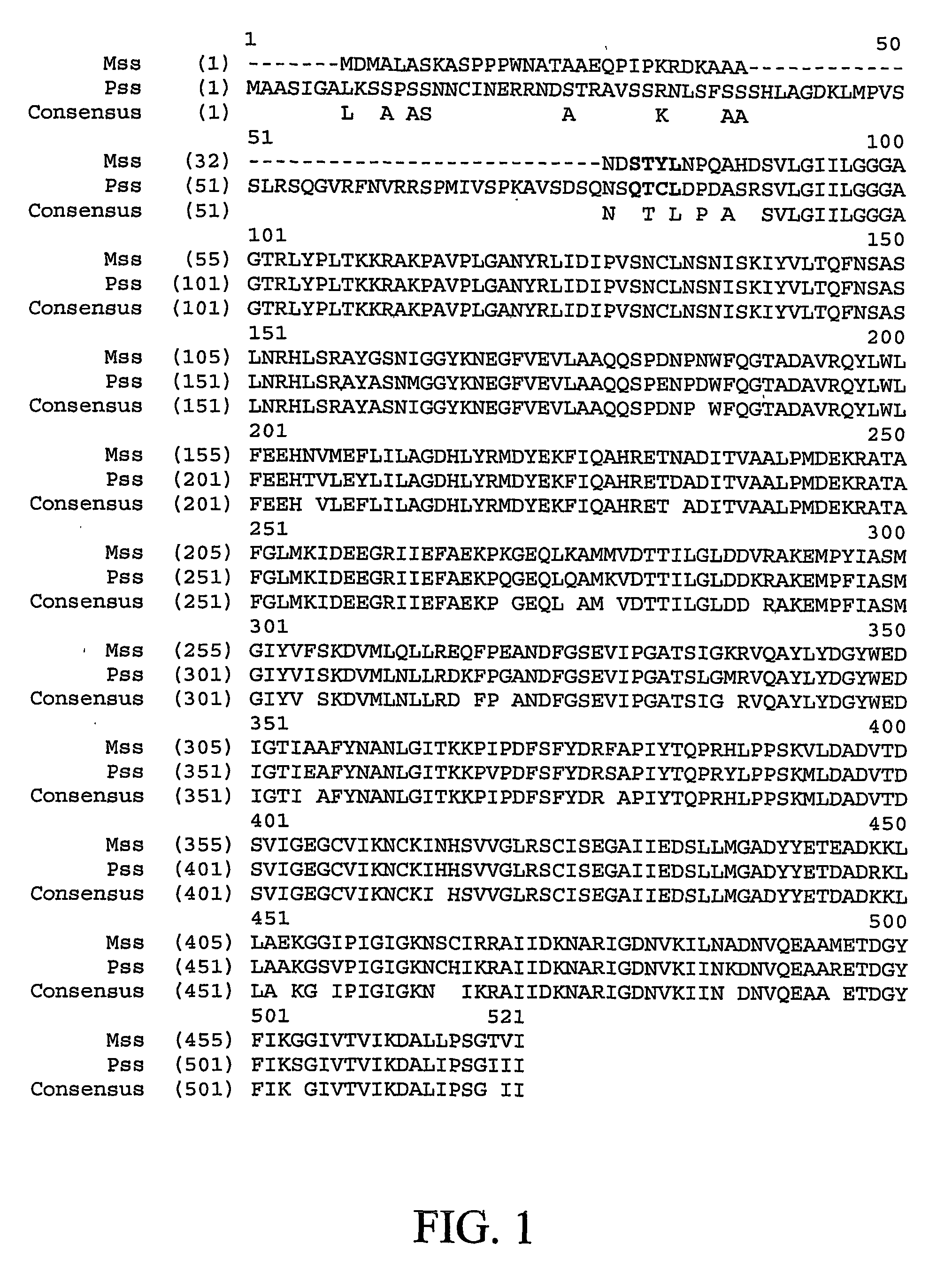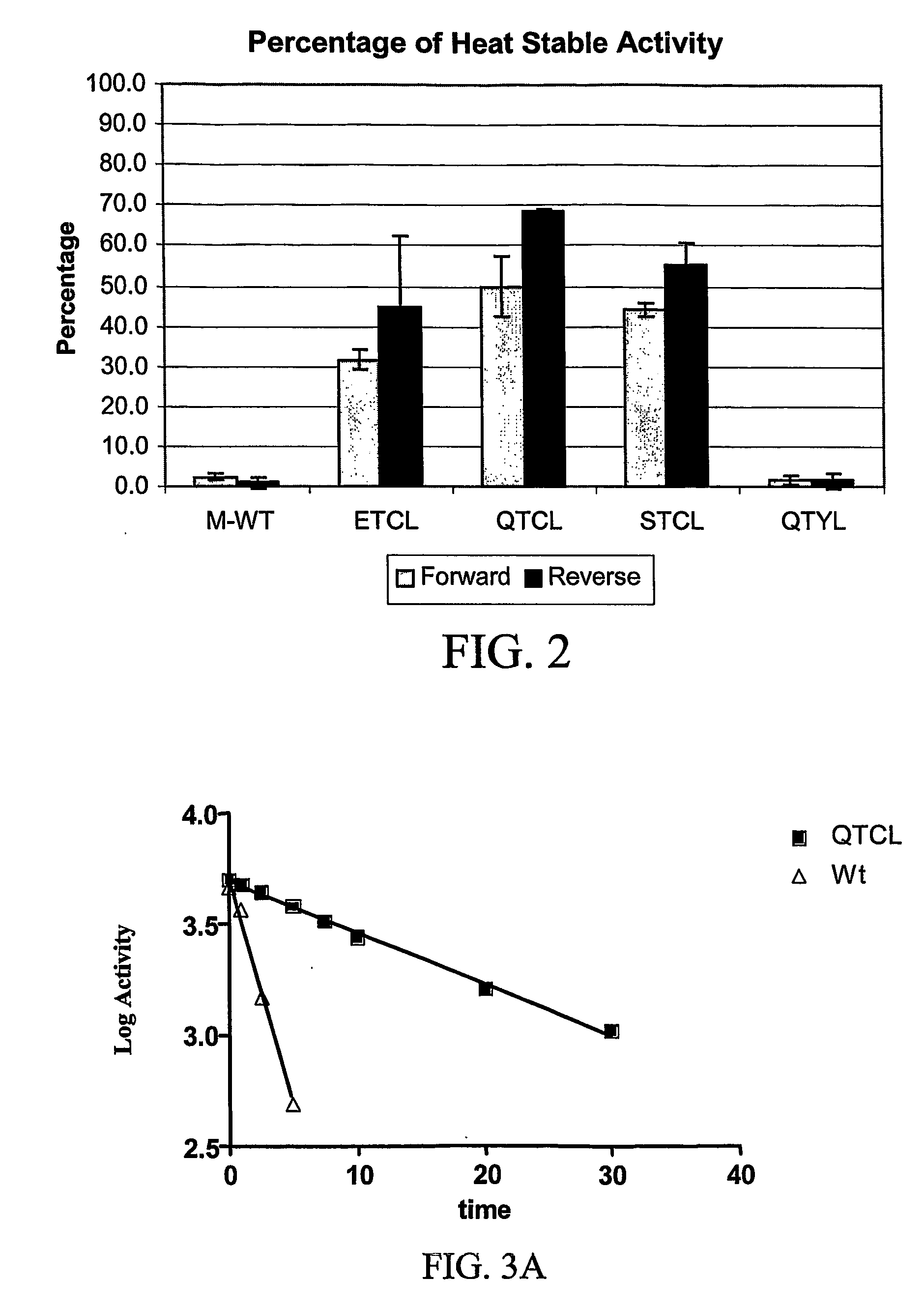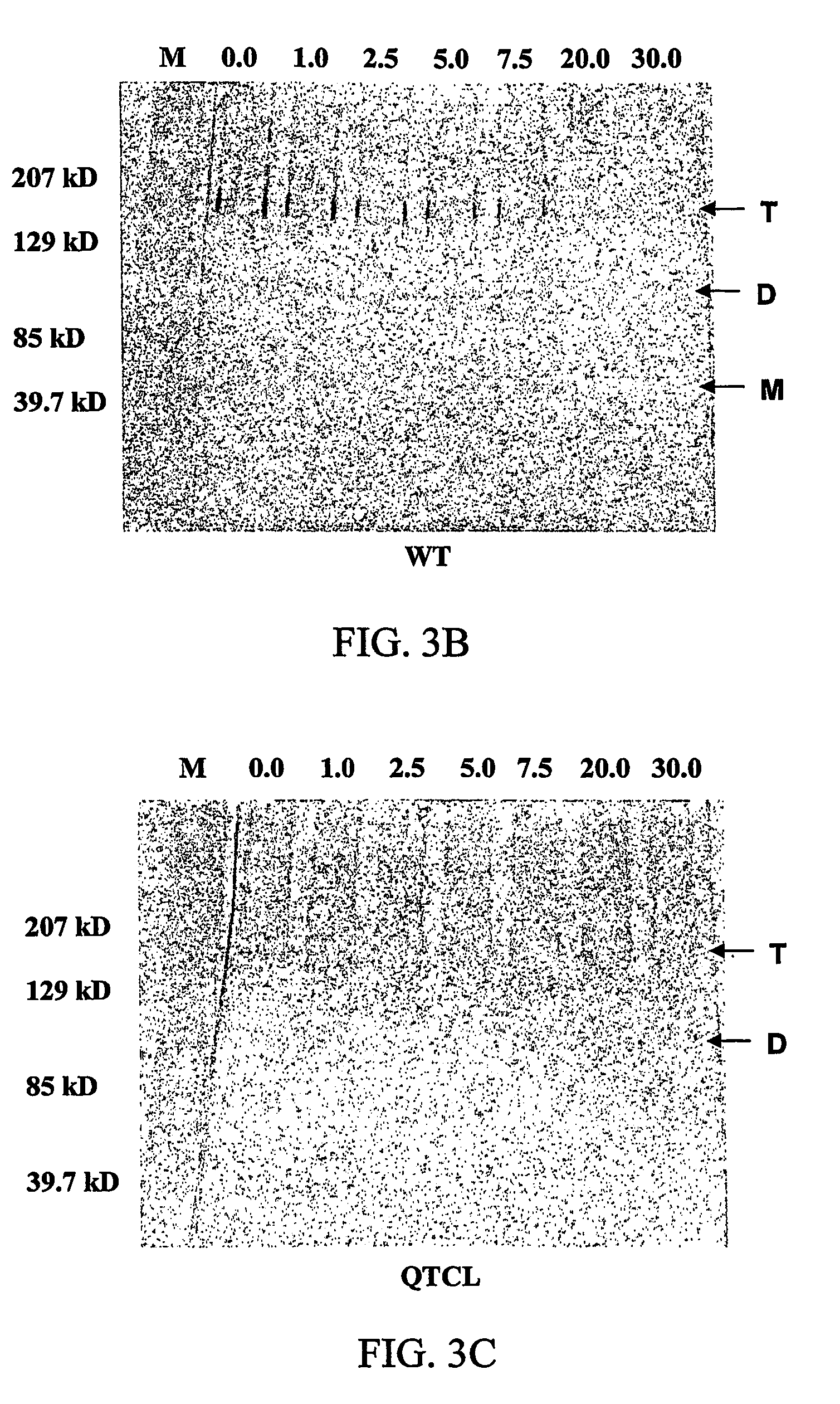Heat stable variants of plant adenosine diphosphate glucose pyrophosphorylase small subunit
a technology of adenosine diphosphate and agp enzyme, which is applied in the direction of enzymology, organic chemistry, transferases, etc., can solve the problems of significant crop loss, adverse environmental conditions, modem agriculture, etc., and achieve the effect of increasing heat stability of an agp enzyme and increasing resistance to heat conditions
- Summary
- Abstract
- Description
- Claims
- Application Information
AI Technical Summary
Benefits of technology
Problems solved by technology
Method used
Image
Examples
example 1
Enzymatic Activity and Heat Stability of Mutant AGP
[0114]Point mutations were created in the N-terminus of the maize endosperm small subunit, brittle 2 (Bt2) and expressed with wild type large subunit, Shrunken 2, to form a mutant maize AGP enzyme. The mutant enzyme was assayed for increased heat stability relative to wild type maize endosperm AGP. All the modified BT2 proteins tested exhibit activity levels comparable to the wild type maize endosperm before heat treatment; however, the QTCL mutant has a slight increase. Since the specific activity is consistent among the preparations (Table 2), there is no change in enzyme turnover or expression levels caused by the mutations. The most dramatic increases in activity over wild type maize endosperm are observed after heat treatments of 58° C. for six minutes. The change of tyrosine to a cysteine results in a dramatic increase in heat stability (see FIG. 2, Table 3). In the case of QTCL, greater than 50% of the enzyme remains active a...
example 2
[0115]Due to the increased activity levels and greater heat stability, the QTCL mutant was chosen for further kinetic analysis. The QTCL mutant and wild type enzymes were purified from E. coli as described in the materials and methods. The kinetic constants, Km and Vmax for ATP and Glucose-1-Phosphate (G-1-P) were determined for both the wild type and the QTCL enzyme (Table 4). The kinetic constants for wild type, 0.066 mM for ATP and 0.036 mM for G-1-P, are similar to those reported in the literature. The Km values for the QTCL mutant are also similar to those obtained for the wild type enzyme. The kinetic constants determined for the forward reaction show that the mutation is not interfering with the binding of substrates. Only slight changes are seen in the Km for both ATP and G-1-P. The catalytic efficiency (Kcat / Km) is also similar for both enzymes.
[0116]Maize endosperm AGP can be activated by the presence of 3-PGA and inactivated in the presence of Pi. The acti...
example 3
Analysis of Purified AGP Enzyme
[0118]The data from the crude extracts shows that the QTCL mutant conferred more heat stability than the wild type enzyme. However, to obtain a more detailed view of the inactivation kinetics, the t1 / 2 was calculated from a graph of log % activity versus time for both the wild type AGP and the QTCL mutant (FIGS. 3A-3C). Purified wild type and mutant AGP enzymes were incubated at 42° C. for varying amounts of time then evaluated for AGP activity and protein structure. Although the purified QTCL enzyme conferred some degree of heat stability at much higher temperatures (data not shown), 42° C. was chosen because the wild type enzyme dies rapidly at elevated temperatures. At various time points, a fraction of the enzyme was withdrawn and placed on ice. The sample was divided and a portion was used for both enzymatic and structural analysis. The enzymatic data show a linear response with time (FIG. 3A). The half-life of the QTCL variant and wt AGP were sho...
PUM
| Property | Measurement | Unit |
|---|---|---|
| temperature | aaaaa | aaaaa |
| molecular weights | aaaaa | aaaaa |
| molecular weights | aaaaa | aaaaa |
Abstract
Description
Claims
Application Information
 Login to View More
Login to View More - R&D
- Intellectual Property
- Life Sciences
- Materials
- Tech Scout
- Unparalleled Data Quality
- Higher Quality Content
- 60% Fewer Hallucinations
Browse by: Latest US Patents, China's latest patents, Technical Efficacy Thesaurus, Application Domain, Technology Topic, Popular Technical Reports.
© 2025 PatSnap. All rights reserved.Legal|Privacy policy|Modern Slavery Act Transparency Statement|Sitemap|About US| Contact US: help@patsnap.com



